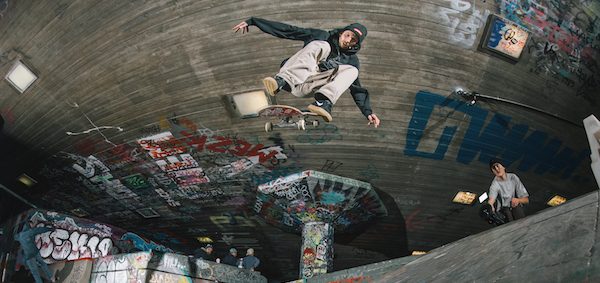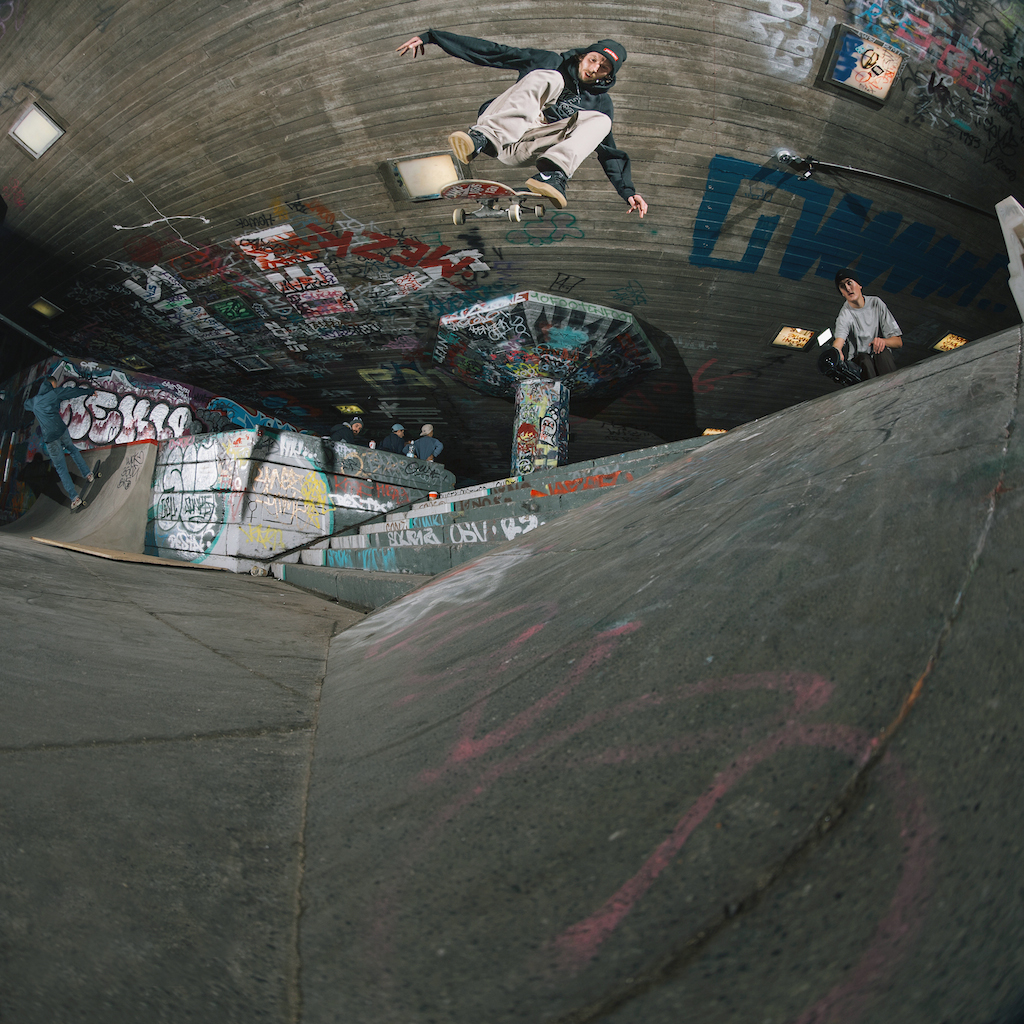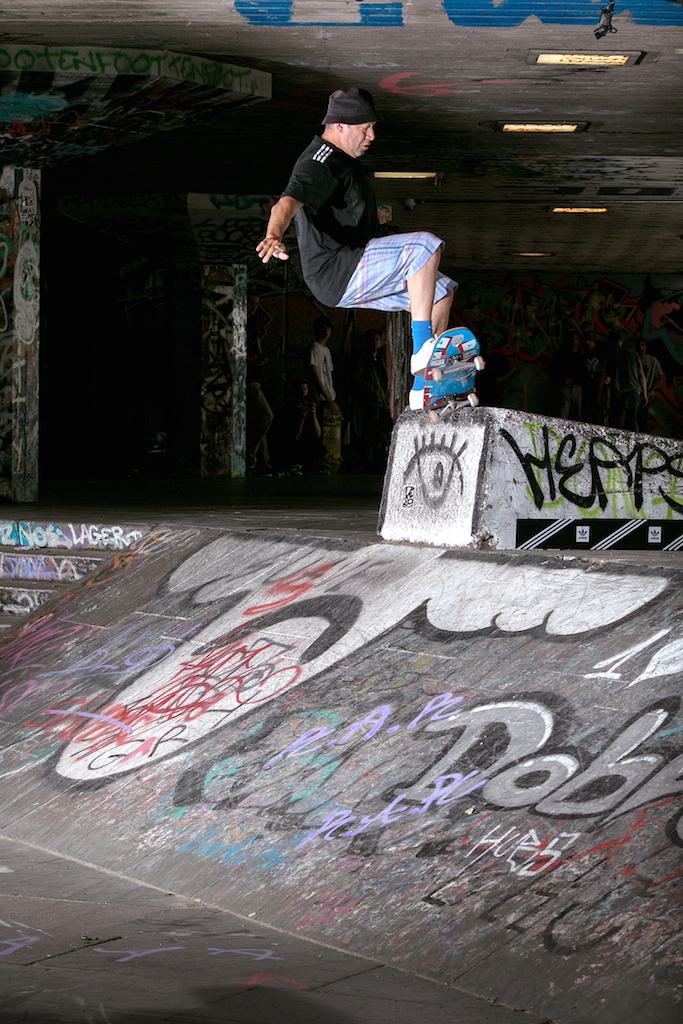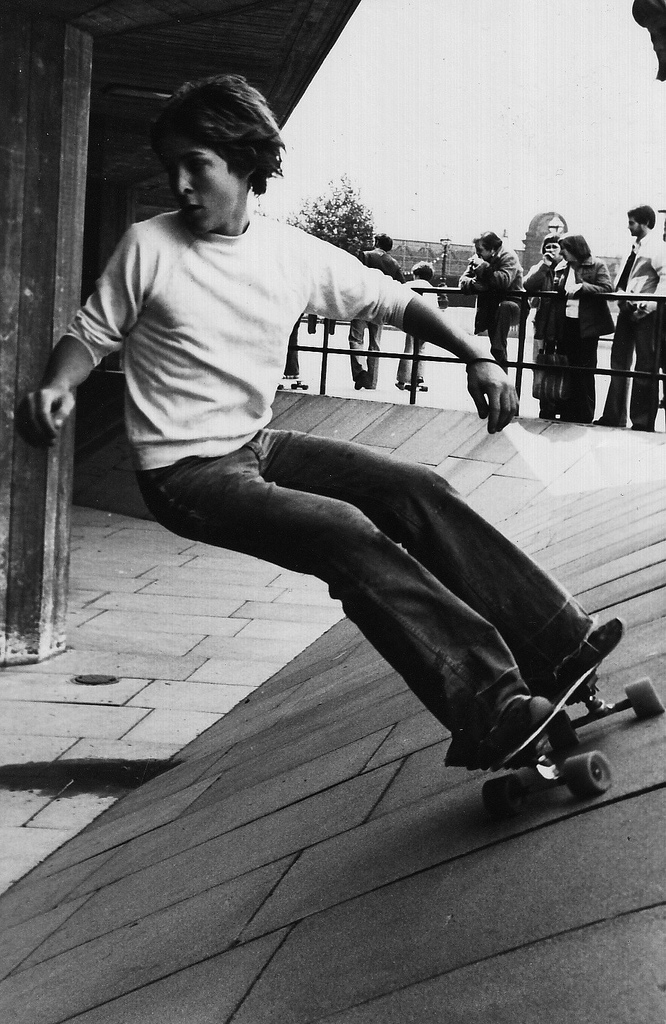
Louis Woodhead From LLSB Discusses The Restoration Of The Southbank Undercroft
The struggle to keep the historic Southbank Skatespot in central London intact has been well documented well in both endemic action sports media and mainstream press. The Long Live Southbank (LLSB) team worked tirelessly through 2013 and 2014 to save this iconic London skate spot, with a legal agreement signed in September 2014. Then, their heads turned to restoring further sections of the spot. With the official announcement in June 2017 that the project was granted planning permission, a fundraising campaign was launched with £790,000 needed for the skate spot. Following the news that the Mayor of London had greenlit a £700,000 match grant, we spoke to Louis Woodhead from LLSB for an update on the progress of the campaign and to hear more about upcoming projects the team have planned for the future of the spot.

LLSB squad shot by Fionn Hutton
Tell us about the project – how long it’s been in the pipeline, where you’re at, milestones and highlights.
Long Live Southbank (LLSB) was originally formed in 2013 to support the long-term future of Southbank, one of the world’s most historic and important skate spots, at a time when it was under serious threat. Against all odds we managed to get a legal guarantee for its future so then we launched a new campaign to restore legendary sections of the space that had been boarded off in 2005.
We’ve been working in collaboration with the effective landowners; Southbank Centre, applying for planning permission successfully and finalising the designs – the final hurdle is raising the rest of the funds. The skate spot restoration is twinned with an adjacent school’s and young people’s centre. For the skate spot we need to raise £790,000, which we are well over half way towards already, although elements of match funding, and the adjacent project make this a little complex.
Who’s on the organisational team? What are their backgrounds?
True to the skate spot, I think Long Live Southbank works quite organically. The core team are all individuals who have come onto the radar through their existing passion for the space. Most are local skateboarders, some are individuals who simply love the community and the atmosphere of the space. Within this group, we’re lucky enough to have individuals that are experienced in social campaigning, the built environment and the organisation needed to run a campaign on this scale.
Who have been your biggest supporters?
We’ve been given a huge amount of support by a large number of companies and organisations, for which we are truly grateful. However, the real answer here is the public. Knowing that 150,000 individuals signed up in our support and having that body of opinion encouraging those with the funds available to support the project is invaluable. It’s a really important public space in the heart of London, and it resounds with an awful lot of people.
What’s your elevator pitch – in short, why does London, the Southbank and society in general need not just LLSB, but skateboarding?
London is growing incredibly quickly, and the open spaces and public creativity are all too often side-lined and built over. If London is to grow as an enjoyable free feeling city in the long-term then spaces like Southbank where young people can thrive creatively have got to be preserved and nurtured.

Jak Pietryga shot by Chris Johnson
Tell us about your memberships and how important their voice is.
Long Live Southbank has 150,000 members, which of course really highlights how important the space is to so many people. The voice of our supporters is really valuable, and we do make an effort to be as accessible as possible in real life, through regular events and pop ups, which act as points for community engagement too. Of course, the very centre is our ethos is to work with the Undercroft community at every opportunity, which isn’t hard as we’ve got our ear to the ground every evening when we’re skating down Southbank…
What are the next steps, and what is the final goal? Do you have end dates?
The aim is to restore the sections of Southbank that were boarded off in 2004 and 2005. We hope to have the fundraising complete before the end of this year. That of course would mean the skateboarding community really pulling together to raise the funds required, but it is definitely possible. From then, the build could be complete by the start of Spring 2019.

Mark Gonzalez shot by Andy Horsely
What have been the biggest hurdles/threats to the campaign?
The biggest hurdle is of course the fundraising. We’ve got really good support from a huge variety of stakeholder groups. Now we are trying to reach out to as many people as possible to keep the financial support for the project really strong.
What can our readership do to help the cause?
It would be great for people to go away and start having conversations about how important spaces like Southbank are, and really think about how we can come together to make projects like this possible. Many readers will be well connected in the skate industry. Having those conversations with the most influential people is really important: ‘this is something that skateboarding in general should get behind.’
Ultimately, we’ve got to raise the finances required, so where there are pots of money within skateboarding, I think it is really positive to support spaces like Southbank which stoke the next generation of kids who will keep buying boards for the next two decades. Fundraising or campaign ideas, as well as emails about stocking LLSB products are warmly welcomed at [email protected]. Plenty of European skate shops sell our clothing already which is super positive.
If we’re successful restoring Southbank, this will be a really good case study and will have knock on positivity for skate spots across the world.

70’s Southbank by Stephane Decool
Could you tell us about the match grant you’ve received from the mayor of London?
So the grant from the Mayor is for £700,000. However, this is conditional on match funding, and is to be split between the space and an adjacent school’s and young people’s centre. We need to keep working hard to hit the match funding target, which we’re making great progress towards, and then we’re in a great position to complete the project.




